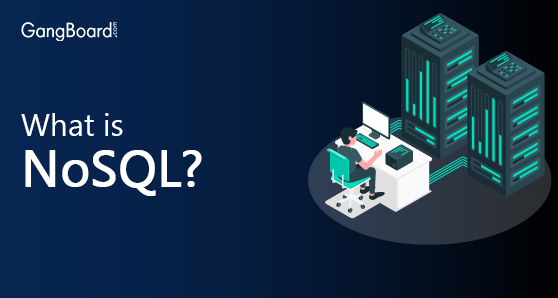
What is NoSQL?
What is NoSQL?
NoSQL is a database management tool. This tool is easy to scale, easily avoids joins, and does not require a fixed schema. This tool is generally applicable for handling distributed data stores which have huge data storage requirements. This database management system is applicable for various real-time web applications and Big Data applications.
This tool has a very user-friendly design and would provide control over the availability of the data. This database is much faster in operation when compared to other forms of database management systems.
Need of NoSQL
NoSQL generally means ‘Not SQL’ and ‘Not Only SQL.’ This tool is capable of providing an easy process for retrieval and storage of data when compared to the SQL database management system.
NoSQL was developed as the solution to the problems faced by the traditional Relational Database Management System, SQL while handling a large set of data. In the case of SQL, the processing speed falls when handling a large set of data.
SQL wouldn’t be able to use the processing power of Cloud Computing. Data structures that are applicable in NoSQL are more flexible in nature when compared to the traditional database system. Developers applied two main technical features to solve all limitations faced by SQL. They are as followed:
Manual Sharding
Tables of this database management system are broken into several smaller size tables and are spread across multiple servers. This is done to increase the agility of the server. The developers have deployed several small size relational databases in several different instances. In each instance, the data is being stored autonomously.
For handling distribution of queries, data and to aggregate those result, proper application programmings have to be developed. Furthermore, databases would be able to enjoy all the advantages of the relational databases through manual sharding.
Distributed Cache
Different system product has its own cache system for their database. The increase in the number of caches would improve the reading performance but it would not improve the writing performance. It would also increase the complexity of the system. For tackling these reasons, NoSQL was developed.
This database management system provides a cloud computing environment and low-cost hardware for its implementation.
In other words, NoSQL is able to support all modern web application environments. Therefore, it reduces the requirement for creating separate cache or any need to write code for maintaining the stored data.
Various features of NoSQL Database Management System
NoSQL has a wide verity of database systems with different features. But each of these databases systems has some common features. Given below are some of the features of NoSQL.
Dynamic Schema
NoSQL systems are developed to be either to have a relaxed schema or to be a schema-free system. This allows the insertion of data without any specific scheme. This allows developers to make any significant change in the application without any interruption in the service. This feature offers a heterogeneous data structure in the same domain of the data.
Replication of database
This is another feature of the NoSQL database management system. It is fully capable of supporting replication of database in any case of planned maintenance and outage events. More advanced NoSQL databases have self-healing capabilities and would offer recovery and automated failover features.
Types of NoSQL Database Management System
All NoSQL database management systems could be categorized into four main groups. The four groups of NoSQL database management systems are given below:
Key-value based database systems
In this databases system, a hash table is used for storing a key value. This hash table has a unique pointer and a unique key for a particular data or item. Key-value stores have no query language. These databases are applicable for storage of session information and comments.
Graph-based database systems
In this databases system, relationships and nodes are critical components. A relationship tells how two nodes are being associated and a node would represent a data entity. The data entity would be stored in the node with relation as edges. Every edge and node has a unique identifier. Graph-based database systems are mostly applicable for logistics, social networks, and spatial data system.
Column-based database systems
In this databases system, data are stored in the table format. Column database systems are developed on the BigTable paper by Google. Each of the columns would be treated separately and values of would be stored contiguously in the column database.
These database systems are applicable for managing business intelligence, data warehouses, Library card catalogs, and other similar applications.
Document-based database systems
Document-based database systems retrieve and store data in the form of key-value pair. But instead of storing numerical value, it stores a document. The documents are stored in the format of either XML or JSON format. This database doesn’t support either joins or relations.
From the above article, you would be able to create an idea regarding the feature and different types of NoSQL. This modern database system is now actively being used in every new technology that is being implemented. Therefore, it is important to understand the NoSQL before implementing it.


 +1 201-949-7520
+1 201-949-7520 +91-9707 240 250
+91-9707 240 250